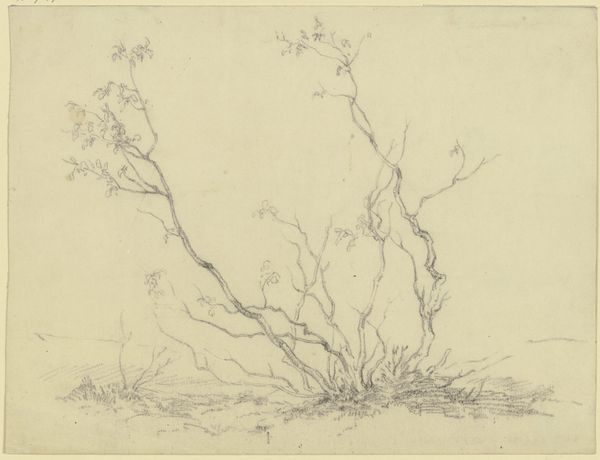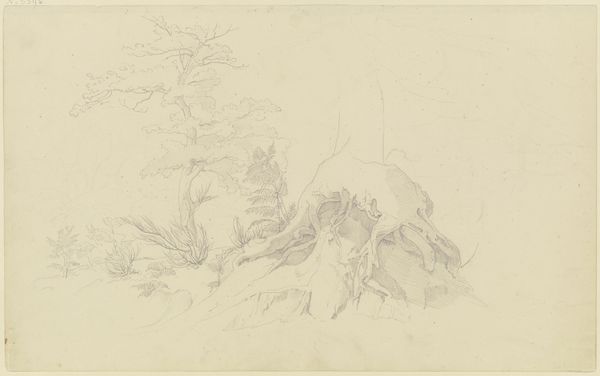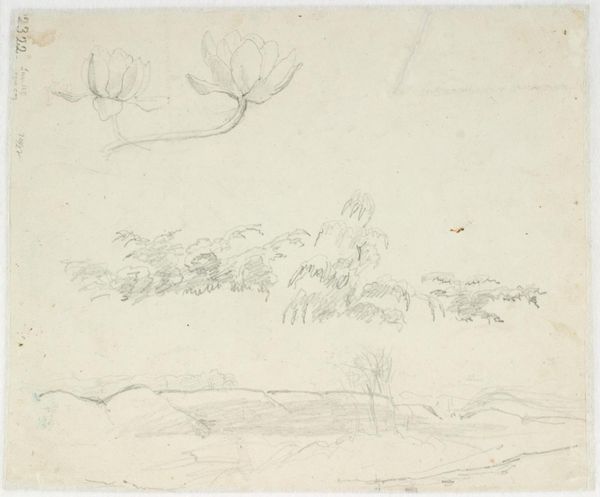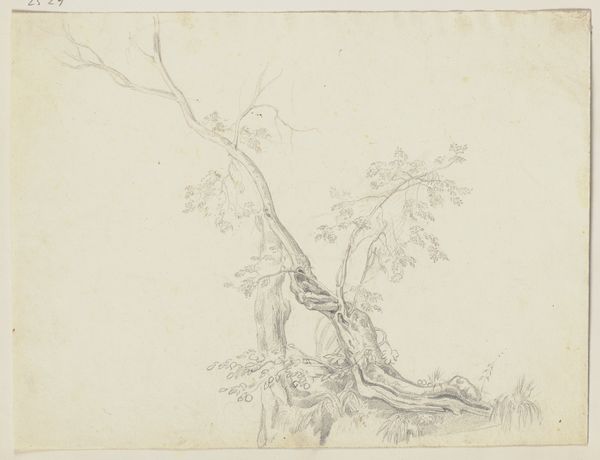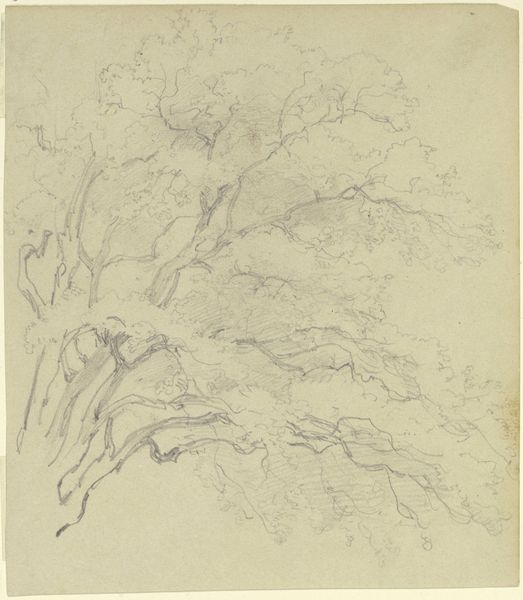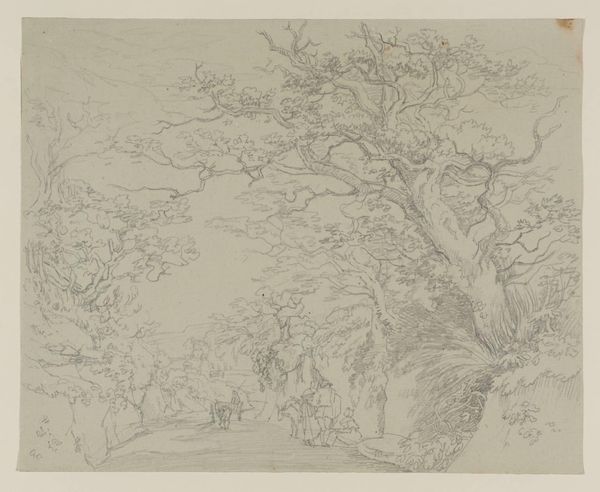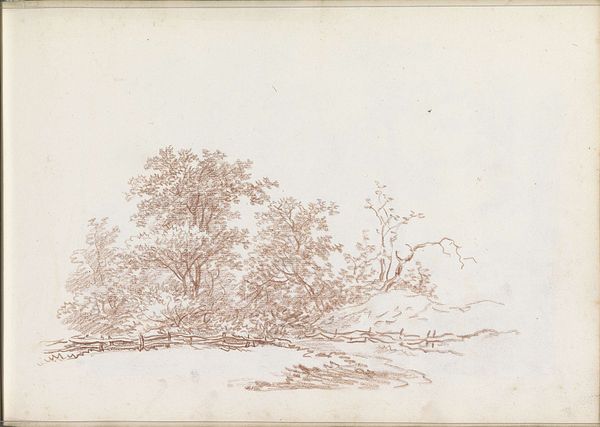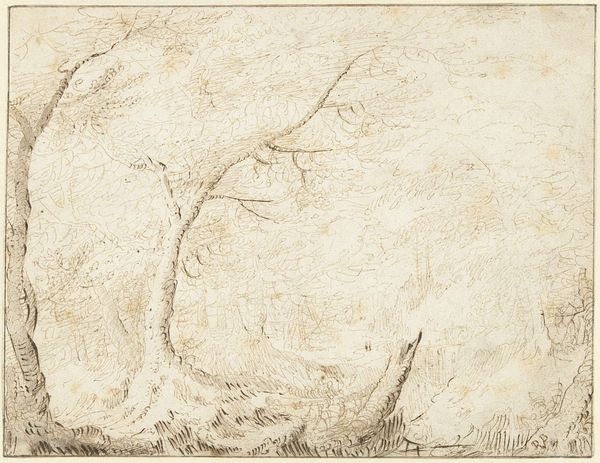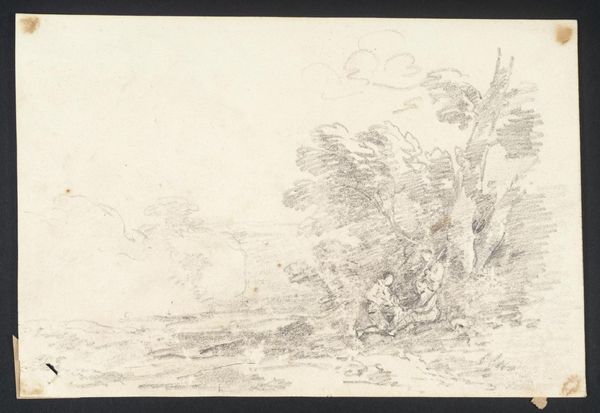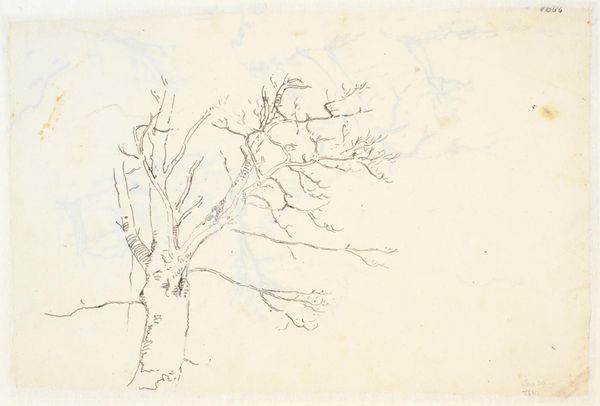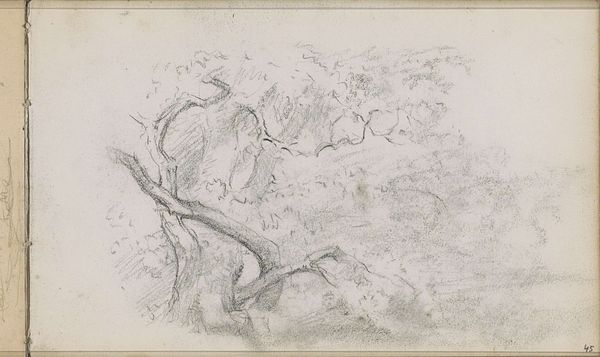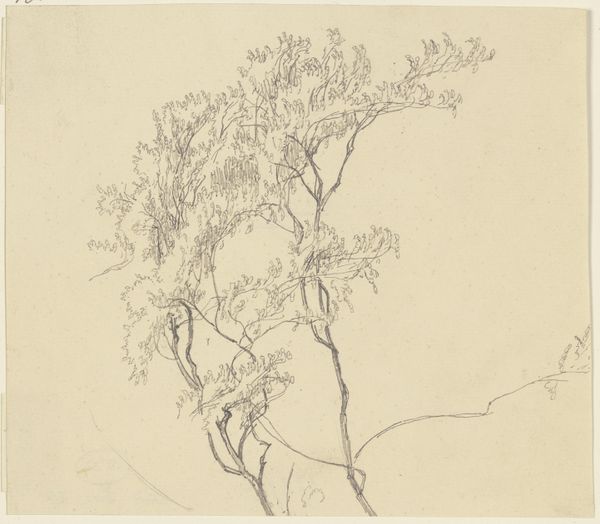
drawing, graphite
#
drawing
#
organic
#
pen sketch
#
landscape
#
etching
#
ink line art
#
organic drawing style
#
romanticism
#
graphite
#
sketchbook drawing
Dimensions: height 170 mm, width 185 mm
Copyright: Rijks Museum: Open Domain
Editor: Here we have "Weggetje langs een boom," or "Path by a Tree," a graphite drawing by Pieter de Goeje, dating roughly from 1789 to 1859. It feels very quiet, almost fragile, the way the artist captured this landscape. What strikes you about this drawing? Curator: What I find compelling is how this work invites us to consider the means of its own making. Think about the graphite itself – mined, processed, then applied to paper, likely made from rags or plant fibers. It's not just a representation of nature, but a material engagement with it. Editor: So, you're focusing on the materials first? Curator: Absolutely. De Goeje wasn't just depicting a scene; he was employing specific materials, each with its own history and implications. Consider the accessibility of graphite compared to, say, oil paints at the time. This influenced who could create art and how widely it could circulate. Editor: That’s an interesting point! I hadn’t considered the social aspect of graphite. How might the artistic conventions, like landscape drawing, relate to this idea? Curator: Landscape became a popular genre with the rise of the merchant class, suggesting increasing urbanization and detachment from the land. Could this drawing reflect a romanticized, perhaps even commodified, view of nature? De Goeje’s choice of a seemingly simple subject actually highlights complex relationships between people, materials, and the environment. Editor: That's a richer perspective than I initially had. So, by considering the material and its context, we move beyond just seeing a pretty scene to understanding its connections to labor and social change. Curator: Precisely! And perhaps we see the artist not just as a solitary genius, but as a participant in broader economic and material networks. Editor: It's amazing how much more there is to see when we think about art in terms of material and process! Thanks for shedding light on that.
Comments
No comments
Be the first to comment and join the conversation on the ultimate creative platform.
